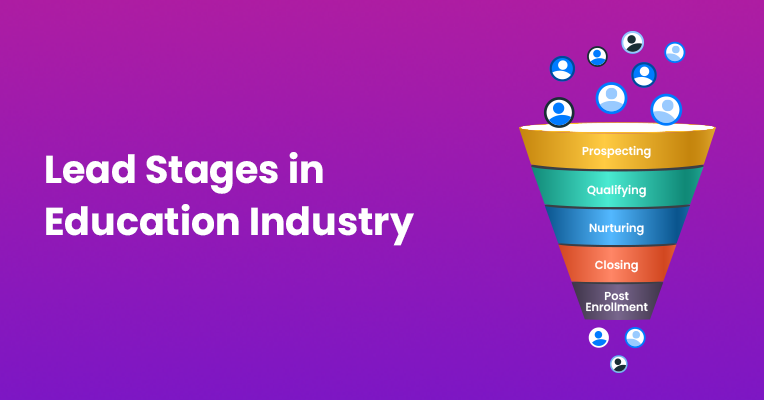Attract - Sell - Retain:
A growing number of schools and learning centres compete for the attention of prospective students, creating a successful strategy to attract, sell, and retain customers is essential. To stay competitive, institutions must not only recognize who their customers are but also craft strategies that clearly define their unique value proposition while understanding where they align with competitors. This article outlines effective strategies, identifying the target audience, differentiating services, and building a sustainable approach to student recruitment and retention.
Defining the Customer in Education
In the education sector, the term “customer” is multifaceted, referring to different groups that schools serve and support. Understanding these segments is critical for tailoring marketing and recruitment efforts. Here are the primary customer types:
Prospective Students: Individuals actively seeking education, typically ranging from preschoolers to adults in continuing education programs.
Parents and Guardians: The key decision-makers in primary and secondary education, who prioritise quality, reputation, cost, and values alignment in schools.
Employers: For vocational and higher education, companies that seek to upskill or reskill their employees represent a unique customer segment, especially in tech, healthcare, and business fields.
Communities and Local Governments: These bodies view schools as central to regional development, and their support can be invaluable, especially for facilities with a focus on public and community services.
By identifying these customer groups, schools can better craft their marketing messages and develop services that align with the unique needs and aspirations of each.
Service Differentiation: Creating a Unique Value Proposition
A unique value proposition (UVP) helps educational institutions differentiate themselves from competitors. Differentiation is crucial because it communicates why prospective students or parents should choose one institution over another. Here are some strategies that schools can use to stand out:
a. Curriculum and Program Specialization
Institutions that offer unique programs, such as STEM-focused curriculums, arts-integrated education, or bilingual programs, can appeal to specific student interests and career goals. For example, a high school with a robust pre-collegiate program focused on the sciences might attract students interested in pursuing STEM careers.
b. Technology Integration
With the rise of digital learning tools, schools that integrate cutting-edge technology—like virtual reality (VR) for immersive learning, artificial intelligence (AI) for personalised instruction, or blockchain for secure credentialing—gain a competitive edge. By positioning themselves as forward-thinking and adaptive to technological trends, institutions can appeal to tech-savvy students and parents.
c. Focus on Mental Health and Wellbeing
With growing awareness around mental health, schools that prioritise student well-being through counselling services, mindfulness programs, and a supportive community culture are likely to stand out. These efforts signal a commitment to holistic education, which increasingly resonates with parents and guardians.
d. Alumni Success and Career Pathways
Schools that actively track and promote their alumni’s achievements create a powerful marketing tool. Career support, robust alumni networks, and partnerships with businesses for internships can enhance the appeal of vocational and higher education institutions.
e. Community and Cultural Engagement
Schools with a mission focused on community impact, global awareness, or cultural exchange programs can appeal to students and parents seeking more than academic rigor. Offering service-learning opportunities, cultural exchange programs, or local community involvement can differentiate institutions and attract students eager to engage with the world.
Service Similarities: Identifying Common Grounds with Competitors
In education, many institutions share overlapping services and values, and understanding these similarities is key to effective positioning. Rather than focusing on aspects that may be indistinguishable, schools can emphasise shared strengths while amplifying what makes them unique.
Accreditation and Quality Standards: Most schools promote high academic standards, which are crucial for credibility and trust. Sharing quality benchmarks can reassure prospective students and parents that the institution meets established educational criteria.
Comprehensive Support Services: Tutoring, career counselling, and extracurricular activities are commonly offered across institutions. Highlighting these aspects while ensuring quality and consistency helps maintain competitiveness.
Community-Focused Initiatives: Schools often share community-driven goals, like improving local engagement, offering scholarships, or supporting educational outreach. Recognizing shared values fosters positive competition while allowing schools to differentiate their particular approach.

Strategies to Sell and Retain Customers in the Education Sector
Effective marketing and recruitment strategies must be tailored to each customer group, leveraging both online and offline tactics to reach target audiences. Here are several actionable strategies for schools and educational facilities:
a. Leverage Data-Driven Marketing
Data-driven insights can reveal patterns in student interests, engagement, and demographics, enabling schools to tailor their outreach. By analyzing data, schools can identify potential students who are most likely to be interested in their offerings and target them through personalized email campaigns, social media advertising, and program-specific landing pages.
b. Develop a Strong Online Presence
In an era where digital presence often forms the first impression, having a professional, informative, and engaging website is essential. Content should be student-centered, highlighting programs, faculty, facilities, and testimonials. Schools should consider the following:
- SEO and Content Marketing: Creating blogs, videos, and other content that answers questions prospective students and parents might have about education options can drive organic traffic.
- Virtual Tours and Open Days: Virtual tours and open days enable prospective students and parents to explore facilities remotely, offering flexibility and accessibility. Schools can also host webinars with faculty and current students to provide deeper insights.
c. Nurture Relationships through Personalization
By implementing a Customer Relationship Management (CRM) system, schools can personalize communications to prospective students based on their interests, engagement levels, and application status. Following up after campus visits, sending tailored program recommendations, and creating personalized acceptance packages are ways to build a lasting relationship.
d. Offer Scholarships and Financial Aid Counseling
Many families prioritize affordability. By providing clear information about scholarships, grants, and financial aid options, schools can broaden their appeal to a wider demographic. Schools might also consider creating financial aid workshops or one-on-one counseling sessions to help applicants understand their options.
e. Encourage Referrals and Word-of-Mouth Marketing
Satisfied students and parents are often the best marketers for an institution. Schools can develop referral programs where current students and alumni are incentivized to recommend the school to friends and family. Testimonials, success stories, and alumni spotlights on social media and the school website can also build trust and credibility.
f. Engage Through Social Media and Influencer Partnerships
Social media platforms like Instagram, TikTok, and LinkedIn can help schools reach students, parents, and professionals. By sharing engaging stories, campus life highlights, and academic achievements, schools can showcase their community culture. Partnering with education influencers and alumni to create content around student experiences or school values further strengthens brand image.
g. Host Community Events and Workshops
Educational facilities can deepen their community ties and raise awareness by organizing events such as free workshops, informational sessions, or career fairs. These events not only attract prospective students but also establish the school as a pillar within the local community.
h. Alumni Engagement for Long-Term Value
Alumni engagement builds a lifelong connection between former students and the institution, creating a potential network of advocates, mentors, and donors. Schools can offer career support, networking opportunities, and continuing education resources to maintain alumni interest. Engaging alumni can also lead to mentorship opportunities and industry connections for current students.
Retention Strategies: Building Loyalty and Long-Term Relationships
Retaining students is as important as recruiting them, and a positive experience can drive loyalty and encourage further engagement. Here’s how schools can enhance retention:
- Invest in Student Success Programs: Schools that prioritize academic and personal growth through tutoring, mentorship programs, and counseling see higher student satisfaction.
- Maintain Regular Communication: Regularly updating students and parents on events, academic progress, and school news builds transparency and trust. Using newsletters, parent portals, and social media can strengthen communication.
- Build a Supportive Community: Establishing a positive campus culture where students feel included and valued encourages retention. Schools can foster this environment through student clubs, leadership opportunities, and inclusive events.
With rising competition in the education sector, schools must go beyond traditional marketing to connect with their customers. Defining customer segments, crafting a unique value proposition, and implementing a mix of digital and personal outreach strategies can enhance recruitment and retention. By understanding and addressing the evolving needs of students, parents, and communities, educational facilities can establish lasting relationships, ultimately driving sustainable growth and reputation. Embracing these strategies ensures that schools remain responsive,



